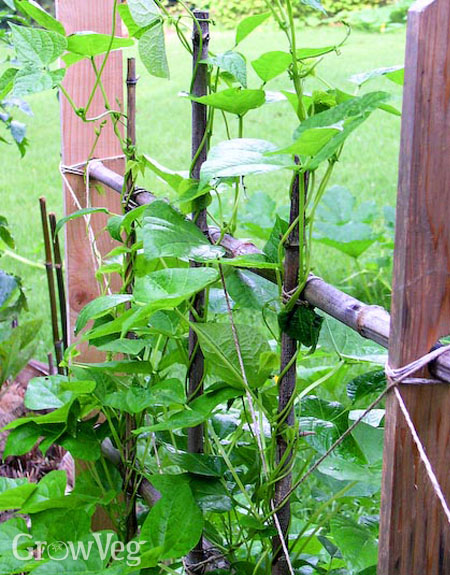In the garden as in life, sometimes simple is best. Such is the case with beans, an uncomplicated vegetable that lacks the drama of broccoli, the sizzle of peppers, the dripping fleshiness of tomatoes. Beans do have a botanic name that rolls easily on the tongue, Phaseolus, and the distinction of being one of the “three sisters” in native American horticulture, wherein long-vined pole beans were (and still are) grown in close company with squash and corn. Yet beans know many more tricks, which I re-learn each season as I guild my garden with beans. Come to think of it, I have never met a boring bean.
Different Types of Beans
Each year I grow several types of beans, including bush snap beans, pole beans, runner beans (a type of pole bean) and one or two varieties that produce meaty soup beans to eat in winter. Not that beans can be so neatly sorted into categories. All green beans eventually mature into soup beans, but various culinary traditions favor one stage over the other. Scarlet runner beans provide an excellent example. English gardeners treasure the tender green pods, while American gardeners grow them for their beautiful flowers. I like to cook and eat the big, meaty seeds, which is rarely done anywhere except in Central America, the homeland of the species.
You are watching: Growing Better Beans

There is some gray area regarding the growth habit of beans, too. Many vigorous bush type varieties of soup bean produce twining stems that twist into a tangle atop the plants if not given a few stakes to keep them heading skyward. In comparison, last year I grew some bush type filet beans that were petite enough to grow in window boxes.
Read more : The Secret Garden Of Love Opens At The InterContinental Bora Bora Resort & Thalasso Spa
Over the years I have grown twenty or more beans, and I will never end my quest to find ways to grow better beans. I’ve distilled my knowledge into the list of tips below, so that even the newest gardener can enjoy success with this easy crop.

Top Tips for Growing Beans
- Wait for warmth before planting beans. Beans are uncompromising in the need for warm conditions, above 55°F (13°C), especially during germination and early growth. Weather that is too cool leads to rotting seeds, slow growth and the inability to bounce back from other problems.
- Never soak bean seeds in water. Soaking peas and many other vegetable seeds in water for a few hours hastens germination, but it has the opposite effect with beans. Under low oxygen conditions, bean seeds cannot proceed with germination. When planting beans in hot, dry soil, plant them in slightly recessed trenches covered with boards to keep them moist until they sprout.
- Plant beans where you want them to grow. Beans can be transplanted if handled very carefully, but many small roots are invariably broken in the process. Beans much prefer direct sowing. Scarlet runner beans are a notable exception, in that young seedlings can be transplanted with ease, perhaps because runner beans are perennials at heart. Pole beans and runner beans also need some type of trellis, as covered in Supports for Climbing Peas and Beans.
- Include some purples in your patch. If you plan to freeze your garden-grown snap beans, include a few purple beans in your collection. All snap beans must be blanched in boiling water or steam before they are frozen, and purple snap beans turn green at exactly the right time, like natural blanch-o-meters.
- Be patient during heat waves. It may seem unusual that warm-natured beans suffer from extreme heat, but they do. Frequently the plants keep growing fine through hot spell, but the blossoms drop off instead of producing beans. For this reason, gardeners in hot climates often grow bush beans in spring and fall, avoiding problems due to temperatures far outside their preferred range.
- Save some seeds. Bean varieties are overwhelmingly open pollinated, so you can save seeds from year to year for replanting. The best way to do this with snap beans is to grow two or three plants specifically for seed-saving purposes. With dry beans, simply select the biggest, prettiest beans from the jar for your seed beans.
By Barbara Pleasant
Source: https://gardencourte.com
Categories: Garden news
